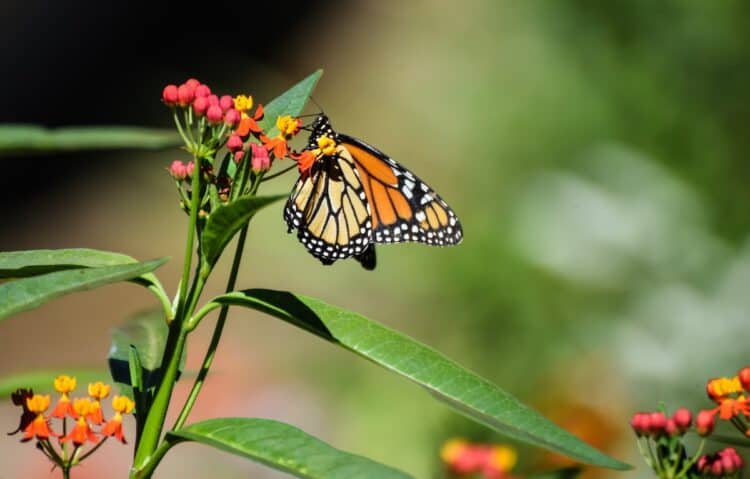Storms earlier this year blew down more than a hundred acres of forests where migrating monarch butterflies spend the winter in central Mexico, killing more than 7% of the monarchs, according to conservationists.
Rain, cold and high winds from the storms caused the loss of 133 acres (54 hectares) of pine and fir trees in the forests west of Mexico City, more than four times the amount lost to illegal logging this year. It was the biggest storm-related loss since the winter of 2009-10, when unusually heavy rainstorms and mudslides caused the destruction of 262 acres (106 hectares) of trees.
This year’s storm also appears to have frozen or killed about 6.2m butterflies, almost 7.4% of the estimated 84m butterflies that wintered in Mexico, said Alejandro Del Mazo, the attorney general for environmental protection.

“Never had we observed such a combination of high winds, rain and freezing temperatures,” monarch expert Lincoln Brower said of the storms, which struck on 8-9 March.
Two big storm losses within five years may suggest changes in the climatic conditions that have allowed the survival of patches of mountaintop forests. An additional 16 acres (6.5 hectares) of trees were lost to drought this year.
“This points up just how fragile these forests are, and how fragile the monarchs are, and it makes clear the importance of reforestation efforts,” said Omar Vidal, director of the conservation group WWF Mexico, which carried out the forest survey along with experts from Mexico’s National Autonomous University and the government.
The monarchs depend on finding relatively well-preserved forests, where millions of the orange-and-black butterflies hang in clumps from the boughs. The trees, and the clumping, help protect the butterflies from cold rains and steep drops in temperature.
That is why illegal logging in the 33,484-acre nucleus of the reserve is so damaging. Conservationists have tried to convince the largely impoverished farm and mountain communities which actually own most of the land that the forest is worth more to them in terms of tourism when left standing instead of being cut down.
In April, Mexico’s government announced it would create a special national police squad to patrol nature reserves and fight environmental crimes. While the force has not yet formally deployed, illegal logging in the monarch reserve dropped this year, from almost 49.4 acres in 2015 to about 29.6 acres.
Unlike in past years, when most logging was done in the farming communities, about three-quarters of the tree-cutting this year occurred on public lands in the reserve’s core area – precisely the kind of terrain that environmental police could most effectively protect.
“This is why we insist that illegal logging in the reserve has to be eliminated, and that the destruction of [the butterfly’s] milkweed habitat in the United States has to be stopped, so that the monarchs have the ability to better respond to these extreme climate events,” Vidal said.
Brower criticized authorities’ decision to quickly approve “salvage” logging of trees downed by the storms, suggesting it strengthened logging interests and disturbs the forest’s chances for natural regrowth.
He wrote that the “decision to authorize the very extensive salvage logging was possibly the worst management mistake that could have been made”.
Environmentalist and author Homero Aridjis said, “The negative impacts of this logging on the forest cover will become all too apparent when the monarchs begin arriving [usually in November] just as the ‘salvaging’ comes to an end.”
“The Mexican government should be taking measures to mitigate the probable effects of climate change on the reserve, instead of turning a blind eye to illegal logging, such as the virtual clearcutting” of the forest on government-owned land, Aridjis wrote.
The damage comes after a rebound for the monarch. The area covered by the butterflies this winter was more than three and a half times that of a year earlier. They clump so densely in the pine and fir forests that they are counted by the area they cover rather than by individual insects.
The number of monarchs making the 3,400-mile migration from the United States and Canada had been declining steadily before recovering in 2014. This winter was even better. In December, the butterflies covered 10 acres, compared with 2.8 acres in 2014 and a record low of 1.66 acres in 2013. That’s still well become the 44 acres they covered 20 years ago.
This article was first published by The Guardian on 23 Aug 2016.






Leave a Reply